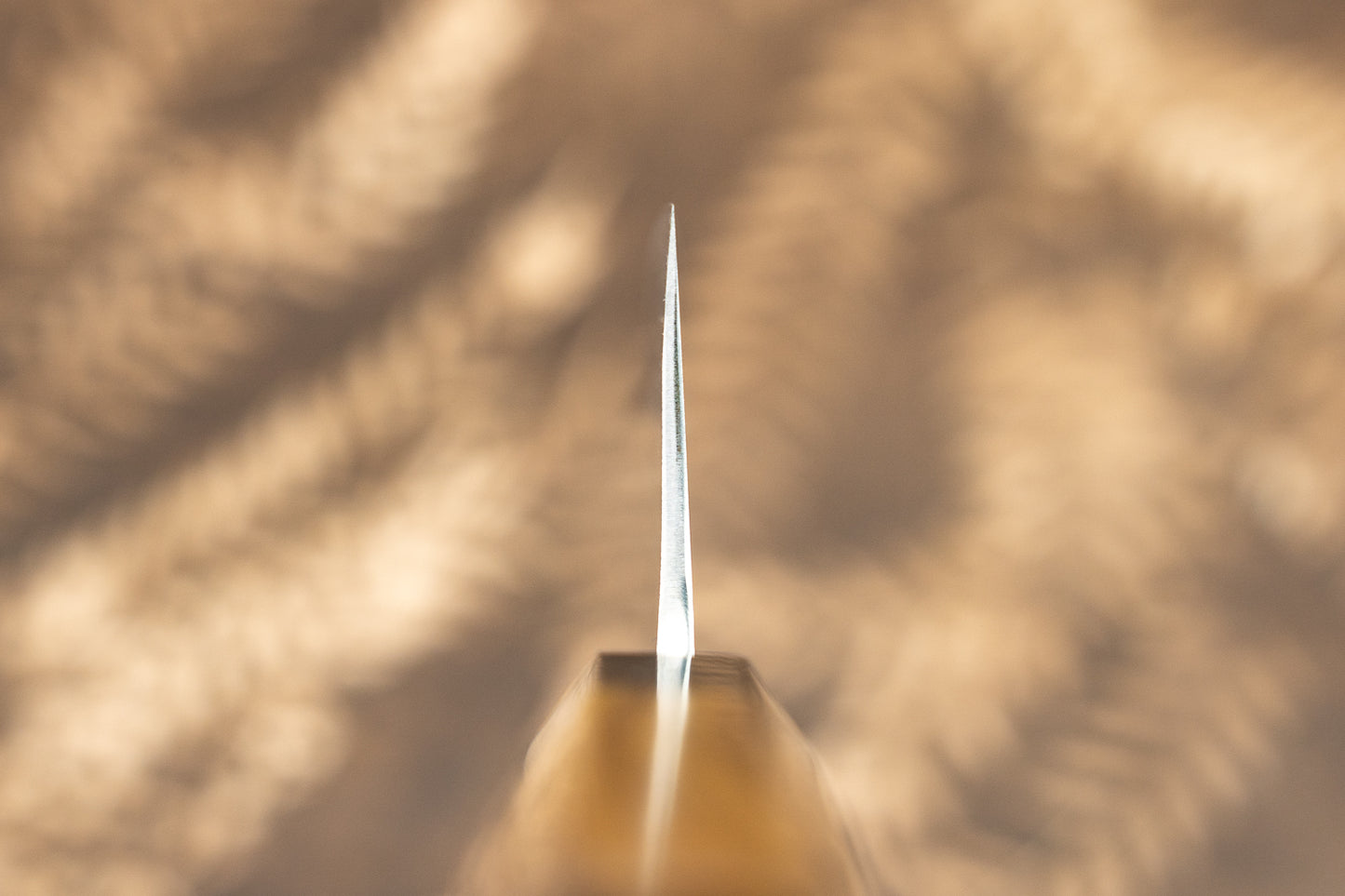Gihei Aogami Stainless Nashiji Santoku 165mm
Gihei Aogami Stainless Nashiji Santoku 165mm
Couldn't load pickup availability
Atsushi Hosokawa-san and Takashi Hosokawa-san, a father and son, are the two blacksmiths behind Gihei knives. While the Hosokawas enjoy working with traditional high carbon steel, they recognize that many folks would prefer a high-performance blade that won't rust easily. This drove them to seek out steel that would offer the best of both worlds.
HAP40 and ZDP189 steels are extremely unconventional in the world of blacksmithing, yet both are considered to be 'super steels'. Both are extremely hard, to the point that most blacksmiths can't even forge with them. The Hosokawas are exceptional for their ability to work with these unusual materials, and the superhuman perseverance it took to master forging them paid off: the hardness and ‘wear resistance’ of these steels allow kitchen knives made from them to retain their edge longer than any other line I’ve seen. While this also makes them more challenging to sharpen, their mind-blowing performance is well worth it.
About the Shape -This is also a multi-purpose knife, but with a slight vegetable bias. Santoku means 'Three Virtues' or 'To solve Three Problems'. The virtues or problems are slicing, dicing and mincing. Santoku is usually found in 160mm - 190mm lengths. These are more and more popular in Western kitchens due to their unique shape and smaller easy-to-handle size.
| Shape | |
|---|---|
| Blade Length | |
| Blade Height | |
| Blade Thickness Above Heel | |
| Weight | |
| Steel Type |
Rust Prone ⓘ
This knife can rust, click to learn more.
|
| Rockwell Hardness | 62–63 |
| Blacksmith | |
| Edge/Bevel | |
| Handle | Octagon Palo Santo Water Buffalo Horn Collar |
| Made in | |
| Brand | Gihei |
A note about measurements: Handmade Japanese knives can vary in their dimensions, so these measurements are only an example.
Knife Care
Knife Care
Shipping and Returns
Shipping and Returns
We aim to ship your order within 1 business day at Knifewear, if there is a hold up, we'll aim to let you know and give you a timeline.
We offer $3 shipping on orders over $100* anywhere in Canada and $200* to customers in the USA. We ship worldwide, and offer up to the minute rates from our shipping partner DHL.
*Konro Grills and some other larger items are excluded from the free shipping offer.
How do I make a return on an online order?
No worries, we've got you sorted. Head over to https://knifewear.com/returns and follow the prompts.
Can I pick up my order Curbside / At the store?
Absolutely, as long as all the items you are looking for are in stock at the location you want to pickup from, you'll be able to select that at the checkout. If one or more items aren't at your preferred location we are happy to ship it to you.






